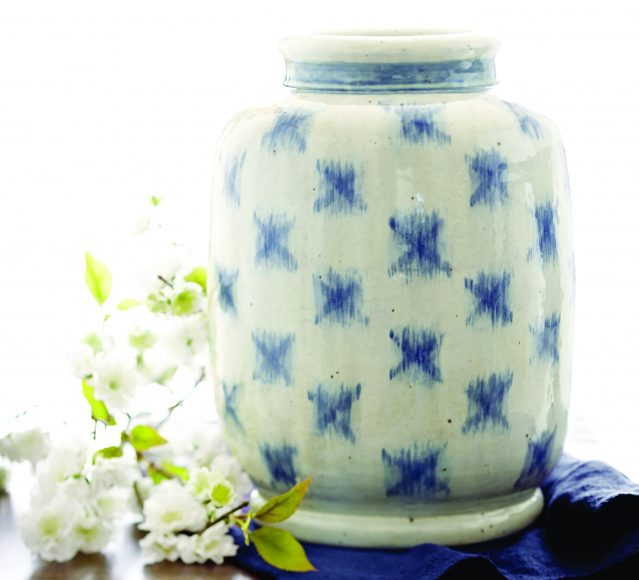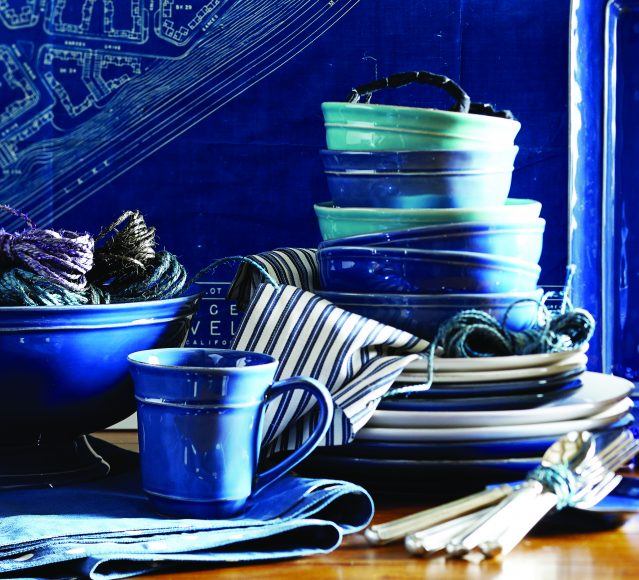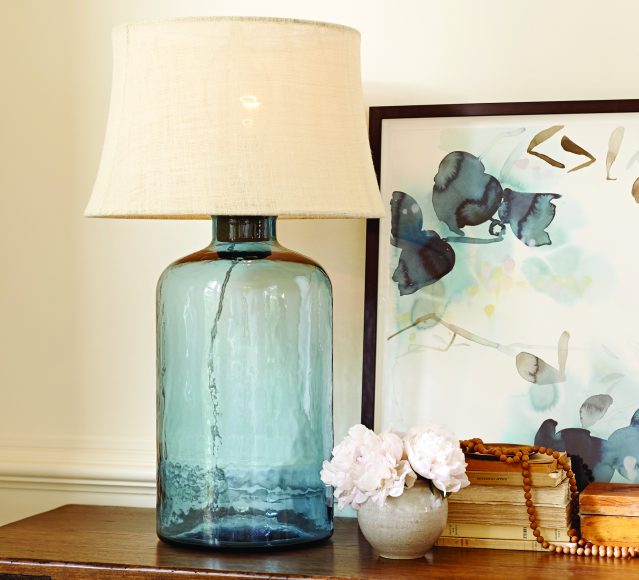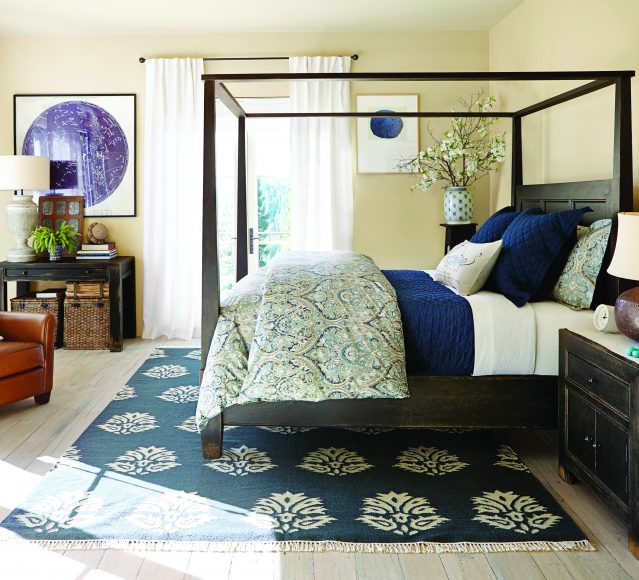These days, we’re feeling blue – but in the best possible way.
Retail powerhouses J. Jill, Nordstrom and Pottery Barn are all in an indigo mood this spring. Among Nordstrom’s many offerings is a striking Diane von Furstenberg lamb leather navy moto jacket with white piping and white discs. It’s paired with her navy intarsia skirt that’s embellished with navy and white stripes framed by white flowers. Pottery Barn – which often works with artisans from India, a home of the indigo dye – is featuring blues in its paisley-accented Rayna bedding, Enzo medallion dhurrie rugs, ceramic ikat vases, Clift glass table lamps and evocative paintings and photographic prints. These arrive at a time when textile specialist Catherine Legrand – proprietor of an ethnic clothing boutique in Paris’ Marais district, has published “Indigo: The Color That Changed the World.”
“It’s an amazing color,” says Lynda Piscitelli, owner of Indigo Chic, which has four boutiques (Cold Spring, Hartsdale, New City and Rye Brook). When Piscitelli began meditating while living in Paris, she would see the color in her mind. It led her to found Indigo Chic.
“I wanted to open a store around denim,” she says. “Americans love their denim, which is indigo color. … I think of blue as fresh. … To me it’s an alternative to black.”
Blue has the distinction of being both classic – think of nautical but nice navy, or Yankee and Wall Street pinstripes – yet varied, with hues ranging from baby blue to inky midnight, conjuring myriad emotions. Ah, moody blues.
“For us, it’s a peaceful and comforting color, a fresh start to the new year,” says Kendra Stewart, public relations manager for Pottery Barn, whose art offerings include northern California photographer Lupen Grainne’s calming “Shore” and photographer Rebecca Plotnick’s sophisticated “Paris Boulevard,” featuring a teal-blue door.
But Stewart acknowledges that blue can be bold as well. It is, after all, the color of sea and sky, both of which can turn turbulent. No doubt that’s why blue is such a cultural chameleon – at times sad and wistful (the songs “Am I Blue?”, “Blue Moon,” “Blue Velvet”); sometimes cheery (the song “Blue Skies”); sometimes experimental (the theatrical Blue Man Group); and sometimes traditional (the term “blue blood,” after the color of the veins peeping through the swells’ oh-so-thin skin).
And sometimes erotic. Think blue movies and the films “Blue Velvet,” “Blue Valentine” and “Blue Is the Warmest Color.” Blue is often the canvas of nudity. When ESPN photographed sculpted San Francisco 49ers quarterback Colin Kaepernick au naturel for its 2013 Body Issue, it did so against the backdrop of the sea. But perhaps the most arresting shot was an interior one of Kaepernick stretched out on a black leather couch – propped up on his elbows, looking out at us – against a serpentine blue background that offset his painterly tattoos, including inscriptions of Bible verses and a mural of angels battling demons.
The ancient Egyptians would’ve understood. For them, blue was the shade of immortality – the color of the sky and thus divinity, a talisman to protect them in the afterlife.
For the Greeks and the Romans – meh. Sure they used blue, especially the Romans, importing indigo dye as well as semi-precious lapis lazuli from Afghanistan. But blue was for plebs, not patricians.
That all changed in 1137 when Abbé Suger, one of the great clerics and statesmen, decided to refurbish Paris’ Cathedral Basilica of St. Denis, the burial place of the French monarchs, installing stained glass windows in which cobalt blue made nice with red for a stunning violet effect. The stage was set for blue, albeit in its lighter ultramarine form, to be used in depicting the Virgin Mary, whose veneration took off in the 12th century. When King Louis IX of France, later St. Louis (1214-70), began wearing blue, it became the color of nobility. Woe to those in Europe who dyed it without a license or wore it without the pocketbook or pedigree to back it up.
It’s been like that for blue – topsy-turvy. First it was the color of the elite, then the working stiffs (thank you, Levi Strauss). Before World War II, it was the color of girls – pink, the cousin of commanding red, being considered better suited to boys. Indeed, turquoise blue was a favorite of Victorian brides, who would give their attendants dove-shaped turquoise brooches as wedding day mementos. Which, according to Tiffany & Co., may be why founder Charles Lewis Tiffany selected the shade for the cover of the Blue Book about the emporium’s annual collection of handcrafted jewels, first published in 1845. Today that robin’s-egg blue, or forget-me-not blue, is known as Tiffany blue and connotes a world of dazzling happiness.
Rich or poor, male or female, one thing remains true blue: Blue is the world’s go-to color. Both Indigo Chic’s Piscitelli and Pottery Barn’s Stewart suggest having fun with the versatile darling.
For your home, Stewart says, “play with texture and pattern. Pair it with some warm woods, creams and ivories.”
For your wardrobe, throw out the old rules, Piscitelli says.
“Back in the day, people would never pair blue and black. But right now people are much more open.”
Pair away – black and blue, silver and blue, and blue and tan (a hot combo for Nordstrom this season).
“I love blue and saddle,” Piscitelli says. “It’s very tailored, very Ralph Lauren.”
So go ahead, be blue.
We guarantee it will make you feel a whole lot better.
Photographs courtesy of Pottery Barn








